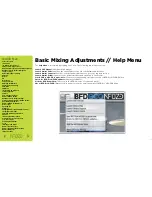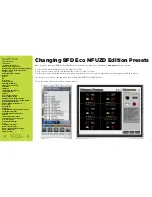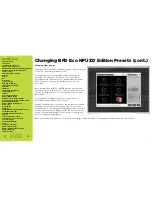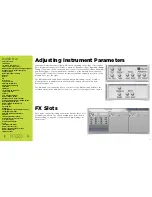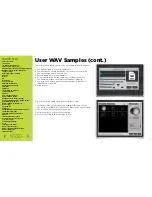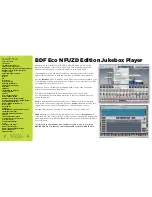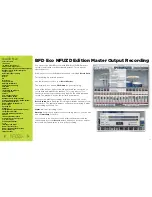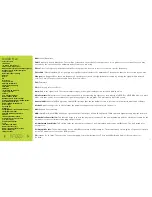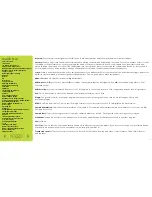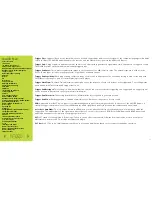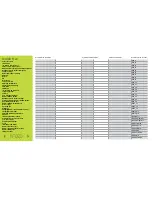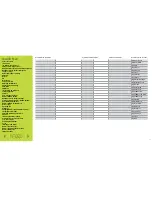
Quick Nav
Table of Contents
Introduction
I/O Module Panel Layouts
Snare and Tom Trigger Zones
NFUZD USB Key (Drive) and Data Management
NSPIRE Series I/O Module Navigation
Trigger Settings
Hi-Hat (HH) Trigger Settings
Kit Menu
Reverb
EQ
Mixer Menu
Saving a UserKit
Adjusting the MIDI Map
Trigger Function Settings
Click Menu
SEQ Menu
Integration with Computer
Setup Suggestions
Sync Key
Auto O
ff
and Sleep Mode
BFD Eco NFUZD Edition
NSPIRE Series I/O Module Settings
Getting Started w/ BFD Eco NFUZD Edition
Basic Mixing Adjustments
BFD Eco NFUZD Edition E
ff
ects
Grooves Page
Options Menu
Help Menu
Changing BFD Eco NFUZD Edition Presets
Changing Drum Sounds
Adjusting Instrument Parameters
FX Slots
Instrument and Mixer Faders
Getting New Professional Sounds
User .wav Samples
Exporting Sound Banks
Loops
Installing Sound Banks
BFD Eco Jukebox Player
BFD Eco Master Output Recording
BFD Eco Mixing Tips
Included Sounds
Three BFD Mixing Tips
In general, there is no perfect preset. If you are happy with the sound then it is perfect for you.
That said, there are some basic fundamentals to building a mix that are very important.
1. Gain Structure
Gain structure is very important because at no point do you want to have distortion from an audio signal that is too strong. That will lead
to problems. Look at the mixer section of BFD Eco NFUZD Edition. If you overdrive any portion of the audio, the top of the virtual
metering on the channel will turn red and stay red. That is referred to as clipping. Everything from that point forward in the mix chain will
be working with that overdriven signal.
2. E
ff
ects parameters
E
ff
ects are a great way to alter the sound of your drums. In BFD Eco NFUZD Edition you can address this in two basic ways. Each
instrument can have their own e
ff
ects in the Channel section. Those will then be unique to that channel. The second way that you can
deploy e
ff
ects is with the use of the two auxiliary channels. This is a very useful approach because you can send multiple instruments to
that auxiliary channel to create an e
ff
ects grouping. In BFD Eco NFUZD Edition you have two of these channels.
3. Reverb
Reverb is a great tool. Remember one important thing. Playing drums live and in a studio requires you to keep the environment in mind.
Very long reverb lengths sound great, but can get in the way of the definition of the sound when mixed in with the other instruments. You
must also remember that the entire size of the Sound Bank must be less than 85 mb. You can add reverb with the internal processor in the
NSPIRE Module. Keep the overall length of your sounds in mind.
6 4


